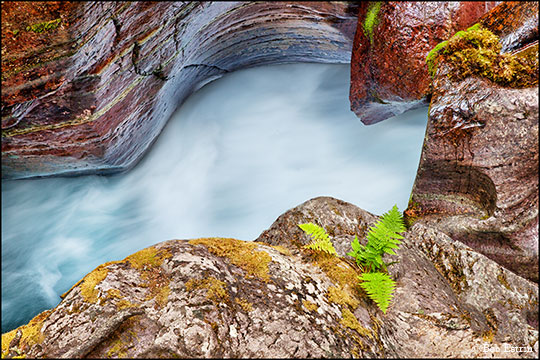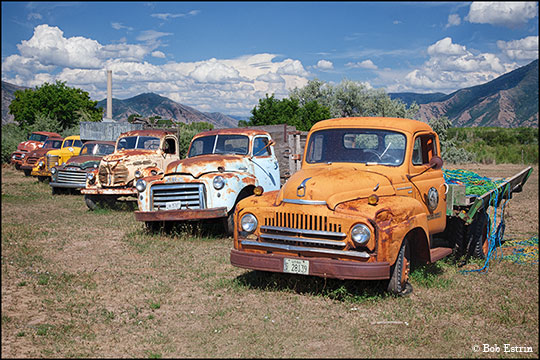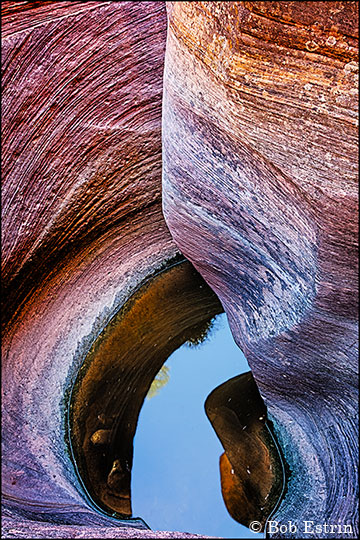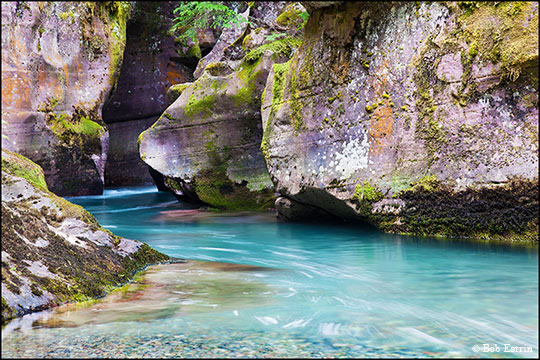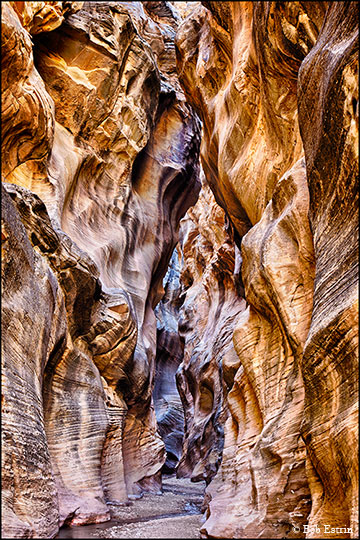Article by Bob Estrin
The artist relationship with the alternative art gallery
and artist/gallery contractsWith many established art galleries leaving the business, artists are finding the need to seek out more alternative gallery locations. These exhibit locations will be mostly run by individuals who do not depend on or make their living by selling art. They may be new to displaying art or just inexperienced in some of the basic procedures and steps that are required to put on an exhibit. This information will be beneficial not only for an artist, but for anyone thinking about displaying art in their establishment.
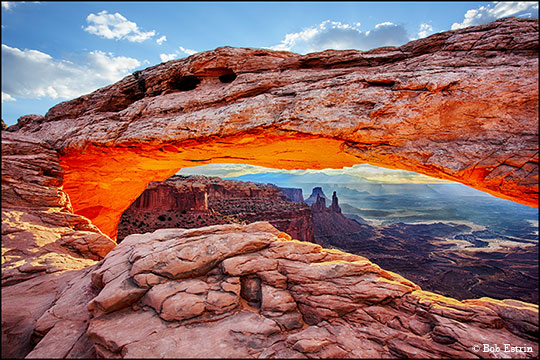
All images are for sale at reasonable prices and can be clicked on for more information.
You may also be interested in reading my related articles: Selling art at art shows or
The artist reception - A social event or a business opportunity.
For art exhibits that are part of a group show such as one put on by an art league, you will probably receive most of the required information that you will need in a printed form or email to participate without asking. These questions are more for alternative art exhibition spaces or galleries and not the established full-time art gallery or a location that is experienced with putting on regular art exhibits at their place of business.
When I refer to the gallery in this article, that means the exhibit space could be a bank, library, coffee house, government art space, restaurant, an actual art gallery, a pop-up gallery, a First Fridays type exhibit space, a temporary space set up to exhibit art, a place selling wine or many other places that exhibit art regularly.
General art gallery questions: Not all questions or information will be applicable for all art spaces but you should ask questions to get the information that is important to you when displaying art at a gallery space. I added a quick Gallery Checklist to the end of the article that you can print out that covers the main topics.
Gallery Contact Information:
Get gallery contact information such as name of business or gallery, address, contact person’s name, email and phone number.
The Gallery Visit:
It is a good idea to visit the exhibit space and meet the person you will be dealing with. Many times this is after they have seen your artwork and wish to meet you and an appointment is made. After being accepted to the exhibit, this is a good time to cover what the gallery responsibilities are and what the artist will be responsible for. Some of these things might be who hangs the artwork, does the artist or gallery supply the title tags, does the gallery take payments from the customer, and who handles any shipping to the customer when required. Some of the main topics are covered on the Gallery Checklist shown below.
While I am at the gallery, I also review the current display and see the art quality, variety of art mediums, how the art is presented as well as the gallery location.
Another thing I look at is the hanging system so you can bring the appropriate hanging hardware and tools. I tap on the walls to make sure that a standard nail/hook will work and I do not need to worry about if I need to drill into concrete or bricks.
Also, when you visit the gallery, this is a good time to look at the lighting available. Many times you will need to wait until the artwork is hung to adjust the lighting to point towards the artwork for the best overall coverage. I usually let the gallery adjust the lighting since it involves climbing on a ladder and touching sometimes very hot lights.
Lighting positioning is best with one person on the ground giving direction on how to adjust the lights for best coverage and the least amount of reflections that a customer might see. Sometimes it is easier to adjust the lighting when the room is darker without so much outdoor window light hitting the wall.
Gallery Contract:
Ask the gallery in advance if there is any contract. Have any contracts given or sent to you for review. You do not want to be surprised by a never mentioned contract when you visit on installation day and feel pressured to sign it at the last minute. While a contract is not always required and some places do not even have one for artists, I prefer to have some of the essential information in writing even if it is during email correspondence. While many gallery consignment-type contracts have similarities, each gallery will have its modifications geared specifically to its location. A few sample gallery contracts are listed below and can be viewed or downloaded to see the general format.
Gallery History of Past Sales:
Ask the gallery about their general history of past sales of the previous artists. Many times they will tell you that sales do not happen often which is them just being honest. If you are more interested in the opportunity of exhibiting your work than making a supplemental income, then this may not be as important in deciding if this is the right place for you to exhibit. Without a trained art sales staff, art is hard to sell in these economic times if the artist is not at the exhibit when the customers arrive. I am never disappointed if I do not sell any art, even if that is one of my goals. For me, some places are mainly an exhibit or a social art event I wish to participate in, and some locations I am more interested in selling.
With a more established full-time gallery or a gallery open for five or more years, you should expect them to have a decent sales history.
Artwork Insurance:
Ask if the gallery has the artwork insured while on display. It is not uncommon for the artwork to not be insured especially by a temporary gallery or alternate gallery space. With my art medium being photography, I do not worry about this as much since I can reproduce my art if needed and I have not had a problem or heard of problems in my area from other artists. If your art is very expensive or one of a kind with many hours of development time, this might be of concern. The artist can always buy separate business insurance that includes art in its coverage. Your insurance agent may be able to write up a separate art coverage rider on your homeowner's policy. Be sure it will cover art used outside the home for business purposes.
I feel that very little art is damaged or stolen at these types of places. I mostly worry about the frames getting damaged or a larger loss by water damage due to a roof leak. If you do have expensive damage to your artwork, you can always ask the business to put in a claim to his insurance and you may find that you may be partially covered as part of the business's insurance even if the owner is not aware of it.
Determine wall space available for artwork:
Once accepted, I ask the gallery how much wall space is available for my artwork and the location of the space. From this, the artist can approximately determine how many art pieces will fit. A lot is determined by how big the different art pieces are and if they are horizontal or vertical pieces. For non-juried shows, the gallery does not usually select the art pieces for you, but your selection should be similar to what you showed the gallery in your initial samples.
I always bring a few extra art pieces when hanging just in case my estimate was wrong or if I want to hang a vertical versus a horizontal for a better fit. The extra pieces are just brought home.
If this is a more structured juried group show, then the gallery has selected the artwork and the number of art pieces that would be in the art exhibit. The artists may not even hang their own artwork or know in advance the display location. Make sure you attach the title cards with the art such as temporary taped to the front or back.
Placing Artist Name on Artwork:
The artist should always have their name listed on the back of the artwork. If you have a business card, this can be attached. Do not depend on the cashier of a large group show to be able to read your painted signature or remember your name from the title card. A business card on the back of the artwork is also helpful for the buyer to find you again or as a historical reference on the artist many years in the future. Also for large group shows, having the artist name on the back my help a volunteer staff in making sure the art goes back to the correct artist when the show is over.
Artist / Gallery Consignment Sheet:
When the artist installs the exhibit, they should bring with them a paper that lists the art pieces you have consigned at the gallery. These can be called a consignment sheet, title sheet, or inventory sheet. A sample gallery consignment sheet can be downloaded and printed below. The consignment sheet should have the gallery name and list each art piece by name along with the retail price. The consignment sheet could also contain other information such as size or artwork description. The gallery signs and dates at the bottom saying that they received the items. You can make two copies in advance and keep one or you can have them photocopy the signed consignment sheet and give you the signed original.
It is a good idea when you have many art pieces on the wall to double check the consignment sheet with the quantity of art leaving with the gallery and also verify the retail prices on the title cards are the same as in the consignment sheet. My version of the consignment sheet also has an area for the gallery to mark down sold pieces and also an artist sign out column. This is helpful if the artist is removing a few art pieces and to keep a record of this for the gallery.
Retail
Artwork Title Art Description Dimension / Medium Price
____________________ ________________________ _______________________ _______
While I mentioned above under artwork insurance that I have not heard of problems related to stolen or damaged art, one thing I and others have had issues with is the loss of smaller items being sold but not recorded to the artist as a sale at the register. I suspect this is more of a clerical error. This should not be an issue on pieces that hang on a wall or are large or expensive. In my case, there were numerous matted photography prints. Even with your name clearly written on the back of each piece of artwork, that does not mean every piece of your art sold was credited to your name. When you do your own occasional inventory at the gallery or pick up your artwork at the end of the exhibit, this consignment sheet is your proof of delivery when you are missing some artwork that has not been recorded as a sale.
Gallery Taking Payments for Artwork Sold:
Ask if the artwork on display can be offered for sale. In most cases they allow sales but you need to find this out in advance if that is important to you. Ask if the gallery takes payments at the gallery or refers the customer to the artist for any purchases. If the gallery does take payments, inquire if they take credit cards. With the value of art sometimes more than customers carry in cash, taking credit cards is important.
If the gallery does not take payments, they may be more interested in having your art as free decoration in their place of business and you may not get any sales from these locations consistently. Remember, just because a place offers to exhibit your art, that does not mean you need to accept every time if it does not fit your needs.
If the gallery does not take payments, I would leave business cards or postcards to be displayed as close to the art as you are allowed making it as convenient for the customer as you can. You can also put the artist contact information such as your name and phone # or email address on each of the artwork title tags which would also include the artwork title and price.
I have made a personal business decision that any small business location that asks me to hang my art in, that already has a register, must take payments for the purchase of the art for me to exhibit. Since buying art in these types of spaces can be an impulse buy, having to write down information and later contact the artist at a later date will heavily reduce any sales. I have written on the bottom of each of my title cards, in these types of places, that the artwork can be purchased at the counter.
Sometimes the small businesses are concerned that if someone takes an art piece home that it will leave a blank space. I always tell them that if a piece does sell, let me know and I will drop by and hang another piece or they can take an art piece from the end and hang it in the empty space if they want. This seems to work well with them.
Gallery Commission Percentage Amount:
One of the main things you need to find out is what commission percentage the gallery is asking for. You should have this in writing even if it just in an email. Sometimes alternative art places think that they should charge the same 50% commission rate as a full-service gallery that depends on art sales to stay in business. I feel that if I am decorating their business location for free, a much lower rate is justified. Depending on the space, most of the time I am surprised that many small businesses do not charge me any commission and even cover any credit card costs they have.
Many of the others charge a more reasonable commission of 10, 15 or20%. For places that do not charge me a fee to hang and are more of a gallery setting, I usually pay a 30-40% commission. You can always ask to pay a lower commission. If the commission is too high for the location, I just do not do the exhibit. It costs artists money to put on an exhibit and the artist needs to feel that they have a chance of making a profit. One thing I do is if the gallery has a lower commission rate, I lower my prices. If the lowering of prices increases the chance of a sale, then both the gallery and artist benefit.
Many times I inform the gallery that they could offer the customers a 10% discount off of the retail price without contacting the artist. I feel that this is a good way for sales staff to encourage sales if the customer can not decide on the purchase. Once the customer leaves, you have probably lost the sale. With alternative art galleries, I would think that the same commission split arrangement would be from the discounted selling price.
Finding Locations to Display your Artwork:
Many times, I find locations to display my art from looking on the art section on Craigslist. Another way is just seeing art on the walls of various places I visit. If you see a location that displays art, ask the manager about what the submission process is to get your art on their walls. Be prepared to be asked to hang a show many months in the future since these things are usually set up in advance. It is important to follow up on these leads right away since you may have just caught them at a time when they are selecting artists for the next six months and a later response may be too late. If they ask you to send in a form or samples by email, do it soon afterward.
You can also find places to exhibit my personal artist recommendations or see where your other artist friends exhibit. Going to artist receptions is a good way to check out the space in addition to being at a nice social event. When artists send you promotional emails or list their art events on social network sites, you can discover additional places that you can contact. After you first submit to a gallery, such as an online request for art, the gallery may have already seen your artwork from sent samples or web site link you provided. The gallery will call you and ask you to come in. Many times you think you are going there to show them your art portfolio but they have already decided and you have been selected to show.
Many of these alternative type galleries, they just want to meet you and show you the gallery space to see if you feel the gallery is right for you. That does not mean that you should not be prepared by bringing some art samples or at least have them in the car and ask the gallery if you should bring them in.
I also find that responding quickly, as in the same day, to a notice that artwork is needed is also a good way to be selected since they may have enough artists that have inquired in only a few days. Also if they ask you to come in to meet you or show your portfolio to them, make the appointment at the earliest time you can meet them.
I have found if you are one of the first artists to see them, you not only are more likely to be selected before the exhibition space gets filled up, you may even have the first choice of prime display space in a group exhibit. About a year ago, I put off meeting with someone about a week due to scheduling problems and my show was booked in the first quarter 2014 (a couple of years later). I could have had an exhibit date much earlier if I was able to meet only a few days earlier.
Gallery Miscellaneous Charges:
Find out any miscellaneous charges, beyond the commission percentage, in advance the gallery may want to charge the artist such as to contribute for the reception or a charge for the wall space. While I do not personally pay for wall space, paying a reasonable fee for an application process or bringing some food or wine for the artist's reception is fine.
See if the contract states the date that the gallery will pay the artist for the work sold. If they have not determined that yet, I usually suggest payment be made by two weeks after the exhibit ends if a month-long exhibit. If the exhibit is over 3 months, I ask them to make payments of any sales monthly or within a few weeks after the sale depending on the location.
While this article is more geared towards local exhibits, if the exhibit requires you to ship your art, determine if the gallery or the artist pays for the return shipping and who is responsible for any damage losses during transport.
Exhibit Dates and Installation / Take Down Dates:
Some other information that I require is the art exhibit start and end dates. I also ask what are the art installation dates and times so that you can meet them at the gallery and time is reserved for this purpose. The installation time is best during non-peak business hours. If it has been some time since I last contacted the gallery, I may send them a quick email the day before the installation reaffirming our appointment time.
I also ask what the date is to take down the exhibit. Many times they do not tell you this and then inform you in the last week. I prefer to find out the takedown date in advance and then call them up a few days to a week in advance and get a specific time that is convenient to them for the artist to remove the art.
Another reason to find out the takedown date in advance is that some places feel that the take down date is the last day of the exhibit and they may assume that you will just come in and pick up your art by yourself. For me, the exhibit dates start the day after installation to the day before picking up the art. If I am to promote the exhibit, I do not want people to show up while I am installing the exhibit or have someone make a special visit to see the exhibit on the last day in the afternoon when the exhibit was taken down in the morning.
Artist Reception:
Ask the gallery if there is going to be an artist reception along with dates and times. The gallery will most likely have and inform you of any artist reception on a group exhibition. I suggest that artists show up for the artist reception for both social reasons and to meet potential buyers. If your exhibit is not in a standard gallery type setting such as a coffee house, an artist reception may not be necessary. In some cases, certain businesses such as a restaurant may not even suggest or allow an artist reception.
Another of my articles: The artist reception - A social event or a business opportunity also relates to the artist reception.
In the case of a solo exhibition or maybe when only two artists are exhibiting, the gallery may ask the artist if you want an artist reception. This could be a special time setup for the artist to invite friends or special guests. The artist should take advantage of this opportunity if they feel that enough visitors will show up. This artist reception should be promoted by both the gallery and the participating artist.
For a solo exhibit, an artist may not want an artist's reception if the gallery does not promote it and feels that not enough people will show up. The artist may choose instead to just be at the exhibit on the opening day or special event day for anyone who comes to visit in a sort of less promoted and informal 'meet the artist' reception. The best time for an artist reception is in the evenings or weekends where more people have free time to visit.
Many times, numerous galleries are grouped together within a short walking distance from each other. These galleries as a group may promote a specific day of the month such as First Fridays or Third Fridays for patrons to visit the galleries. This time would be good for your artist reception or 'meet the artist' type reception since they will bring in more people specifically out to visit the galleries.
Gallery Hours:
Ask if the gallery space is open at any regular hours. Some exhibition spaces may only be consistently open on weekends or selected days and hours during the month. If the gallery is open on regular days/hours, it is best to give these times in any promotions sent by the artist to its customers so that they do not just show up to the exhibit and it is closed.
While many artists may consider an exhibit to be successful if the artist reception is crowded, If you are trying to sell your artwork, many of the sales may happen outside the reception. Many artists just promote the artist's reception. While sales do happen during the artist reception, more serious art buyers may visit outside of that social event to look and perhaps purchase your art. The artist promotion of the event should not just pursue a strong showing at the artist reception but also to bring customers in during other days. Part of that is to let the customer know of the gallery's regular hours.
Gallery Promotion and Artist Promotion:
Ask what promotions the gallery is doing for the event to bring customers in. Let the gallery know that you can provide digital files of artwork for them to use in any promotion as well as any artist information such as an artist statement. While many alternative art spaces do not have an advertising budget, they may have an email list and also can send out announcements to their Facebook subscribers. Galleries or artists can also put a free notice in the arts section of Craigslist or use Fine Art America's event page as an example. Many times the gallery will email you a nice poster promoting the event that you can print out or conveniently have something ready to send to your email list that shows all the important exhibit information.
Also, the artist can individually help by sending out notices to their contacts to bring people in to see the exhibit. With a group show, this can be a lot of free marketing which benefits all the artists in the long run. My last 4 out of 5 exhibits were solo shows and I could not take advantage of this as much as I would like. If you do get selected for a solo show, you may have more control of the marketing and can even put out a PR release which can be picked up by numerous sources. More information on PR releases is listed below.
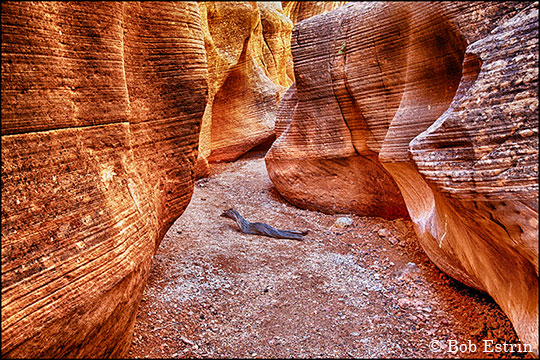
Press Releases:
If the gallery or exhibition space is going to send out a Press Release, find out what deadlines they have for the artist to provide them with the information they need. It is also a good idea to find out if they can give you a date, such as how many weeks before the start of the exhibit, will they send out the Press Release. Everyone has their own opinion on this to not send out too early or the newspapers may ignore them but magazines or monthly papers require a longer lead time.
I just experience the situation of a PR release that was sent out too late and half of the notices in the papers and online started two weeks into the month-long exhibit. I recommend that PR releases be sent in at least three weeks before the exhibit starts as a deadline but could be sent in thirty days in advance or more. As with my case, I could not control when the PR release was going to be sent out.
I did provide them with PR release information very early and even wrote it for them in a form that they could just send out. I think that these things can help but you cannot always get these things handled the way you want if you have no control over what other people are taking responsibility for. In this case, it was a government-run organization and they have set ways. You always have the option on important exhibits to pay a service to send out the PR release that you wrote on your schedule.
Information helpful to have in writing if no contract is available:
For a simple display of my art in a local business that does not sell art as part of their normal business, I do not really require a formal written art contract. I do request that specific things be put in writing such as in an email to cut down on misunderstandings.
I like to have the first four in the following list in writing such as in an email. I would discuss the issues in 5 - 9 but do not need them to be in writing.1. Gallery name, gallery or business contact person, and contact information.
2. Exhibit start and end dates. If the installation and pickup dates are different, then those also.
3. Gallery commission amount. Any other fees that the artist gets charged for should be stated.
4. Is the art insured by the gallery.
5. Does the Gallery take money from the customer on a sale or does the customer need to contact the artist directly. Will the gallery let you know if a sale is made.
6. Will the gallery automatically pay the artist amount due at a specific time such as by the 15th of the month of all art sales of the previous month.
7. Specific location of placement of art and how many art pieces is the gallery expecting.
8. Usually the artist supplies the art title labels, but you can ask if the gallery supplies them.
9. Any specific pieces or general category of art, after viewing my portfolio, are they looking for to exhibit.
10. Is this a group exhibit? How many other artists will be showing.
Some examples of gallery contracts, consignment sheet and checklist:
The sample gallery contracts listed below can be used to show artists a variety of contracts and how they are written. Some contracts may be more specific to a gallery space and some are more generic such as contract 4. By reading a variety of contracts, it may help you better understand contracts that are presented to you. The sample contracts listed below are not meant to be a template to create your own. A book I recommend that has a good section that shows what goes into a gallery contract and what the paragraphs mean is called "The Artist-Gallery Partnership - A Practical Guide to Consigning Art " Book shown at Amazon.
Click here to view Contract Sample 1 Contract 1
Click here to view Contract Sample 2 Contract 2
Click here to view Contract Sample 3 Contract 3
Click here to view Contract Sample 4 Contract 4
Click here to download/print Contract Sample 1 Contract 1
Click here to download/print Contract Sample 2 Contract 2
Click here to download/print Contract Sample 3 Contract 3
Click here to download/print Contract Sample 4 Contract 4
Click here to download/print Gallery Consignment sheet shown below Gallery Consignment Sheet
Click here to download/print Gallery Checklist shown below Gallery Checklist
Gallery Checklist:Gallery name: _________________________________ Phone: ______________________
Gallery address: _________________________________________________________________
Gallery contact name: ____________________________ Email: ______________________
Exhibit start date: _______________ Exhibit end date: ________________
Exhibit installation date: _______________ Exhibit pickup date: ________________
Artist reception date/times: _____________ See the gallery space date/times: ____________
How many feet of wall space available: ______________ How many prints: ________________
Notes: Location of display area ______________________________________________________
Is a gallery contract available: ______
Percentage of sales for gallery: ______ Artwork insured: ______General questions or subjects to bring up:
What is the history of past sales?
Does the gallery accept payment for the art, take credit cards?
Does the gallery refer the buyer to the artist?
Does the artist supply the art title labels?
What are the costs to the artist to exhibit?
What are the regular open hours at the gallery?
What promotion is being done for the exhibit?
Check out the gallery lighting and hanging supplies needed during installation
You may also be interested in reading my article Selling your art at an art show
Feel free to enter in comments.
HTML Comment Box is loading comments...
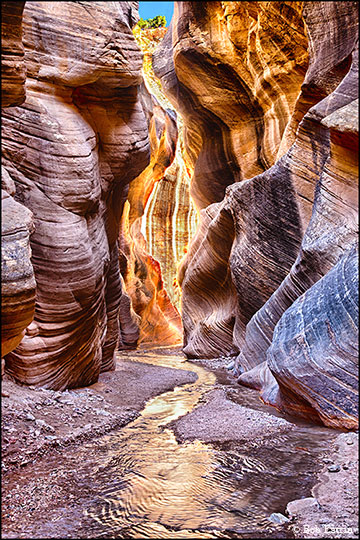
Problems and issues you may have to deal with:
When I arrived for an installation on the assigned date/time, the previous artist artwork was hanging in the display location assigned to me. This restaurant location did not seem to care that the previous artwork was up and may not have even made a date for the artist to pick up the work. They did not think to try to contact the artist after I arrived or offer to remove the art so I did not know what I could do further. I had to leave with my art and go home.
The second time this happened, also in a restaurant, the manager quickly took down about 25 pieces of art from the walls all around the place and just shoved them in a storage hallway. This same manager also gave me a contract to sign at installation time with no previous mention of a contract in the previous months.
As I do more exhibits and other artist-related functions I learn from my experiences and adjust my business practices to have things run more smoothly and professionally in the future. Finding out required information with some of these questions in advance is just one example.
One decision I made is to just walk out of the exhibit space if I arrive again and any large exhibit space that was reserved for my artwork was not empty. You may find this hard to believe but this has happened to me three times. In two of the cases, I had the entire space to display so it was not adding or removing a few art pieces off the wall. I also do not recommend that an artist remove the artwork from a wall of another artist without that artist's permission.
Another personal business decision is to not sign any contract that was given to me last minute by surprise and to also not hang if they did this. This has happened to me multiple times before I starting asking. Asking someone to sign a legal contract last minute when they show up to hang a show is rude and unprofessional. This also tells the artist that this gallery space may not have good management and may not be a good place to exhibit your work. Since I now ask in advance if they have a contract, this has not happened again.
2/2013 update: I just put up a solo show at a public library and was asked to sign and date a document form that the library showed me for the first time while I was installing the exhibit. The library informed me that there was no contract. They may have mentioned this document form to me but did not refer to this as a contract and I was not aware that I would be signing it. Because of this, I have changed my business practices to not only ask if the gallery has a contract but any document of any kind that I would have to sign or approve of in any way. The contract or document would need to be sent to me in advance before I agree to do any exhibit. While I am sure the library did not consider the full-page document they had me sign and the date was a contract, it did state the exhibit dates, setup and takedown dates, and other artist responsibilities along with a line that the artwork would not be insured. This is really a contract even if they did not consider it one. I hope my new policy will avoid this experience in the future.
My last experience with a restaurant was also bad. They made a big deal about having a contract with exhibition start and ending dates clearly on the contract and then called me up about 3 weeks before the ending date and told me to pick up the art. They probably had a friend’s artwork that they wanted to hang up and did not even realize that they broke their own contract agreement. They did not call me to remove the art from the walls and took it down themselves stacking about 13 framed pieces of my art on top of each other in a dirty cabinet with food getting on my frames. I decided to never exhibit my art in a restaurant again and I have not. While writing this article, I realized that almost all of my dealing that I had the most problems with were restaurants and I guess I made a good decision there. I consider a restaurant different from a coffee or wine house type of business which I have only had good experiences with.
It is really up to the artist to determine their own business rules and ways of doing business. I do not expect every artist to be disturbed by the things that bug me, but to set your own guidelines for the way you want to do business. I was much more flexible when I started out by only taking the information they chose to give me and let things just happen. Now I feel that I am running a small business and handling my end professionally and expect the same for those I do business with. The galleries are always happy to answer the artist's questions and when things run smoothly during the exhibit, it is easier on everyone. Since many of my shows are now solo shows, I probably have more questions because the entire exhibit has my name on it and is a reflection of me as an artist. When I am part of a group show, the things I need to know as a participating artist are just the basics.
This long list of things to consider listed in this article is not reality since I try to be flexible when working with people. I do feel that the artist should be treated with respect by the small businesses and alternative art spaces that artists find more available in today’s markets. Most of the time, things run smoothly. Since I now am asking in advance what I feel are the important questions for that particular gallery space that they have not covered, I am having a consistent much better experience.
Bob Estrin
Articles for artist:
1. Selling your art at an art show2. The artist relationship with the alternative art gallery and artist/gallery contracts
3. The artist reception - A social event or a business opportunity
4. Artist printing photography on canvas
5. DIY project on mounting metal prints to the wall
6. Printing photography on different surfaces and presentations
7. Photography career paths for photography students
Articles for artist selling online at Amazon:
1. Selling your art or artisan craft on Amazon
3. Handmade at Amazon - Powerful Bulk editing step by step instructions for your Handmade items
4. Handmade at Amazon - New Handmade SPF seller fulfilled Prime program
Articles on Web Security:
1. Internet password hints for a more secure internet experience
2. How artist can protect themselves from internet scam orders
Articles for photographers:
1. Cleaning your digital sensor
